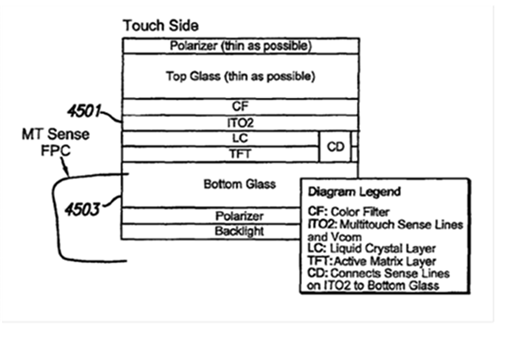Abstract
At this year's SID Display Week 2012 exhibition, held in the US city of Boston at the Boston Convention and Exhibition Center in June. MIC collected data on a large number of Smartphone display products. This report examines Smartphone display products showcased at SID 2012, analyzes their size specifications, technology and display features in order to pinpoint the future trends of Smartphone display products.
OLED Competition in Smartphone Display Segment Intensifying
Looking at the display technologies among the 50 Smartphone display products showcased at SID 2012, LTPS TFT-LCD accounted for the highest ratio of 38.0%, followed by AMOLED display's 32%, a-Si TFT-LCD's 18%, color MEMS display's 8% and electrophoretic display's 4.0%.
The combined share of LTPS TFT-LCD and a-Si TFT-LCD totaled around 56.0%, indicating the TFT-LCD technologies remain the mainstream display technology for Smartphone displays.
AMOLED display's share of the total Smartphone displays topped over 30% to 32.0% with Korean companies being the main advocators especially Samsung. Looking towards the future, it is anticipated that with Taiwanese companies entering into the AMOLED display segment, the combined share of Smartphone displays with AMOLED technology will reach 50% at SID 2013.
4.x" and 5.x" Smartphone Displays Shown at SID 2012 Significantly Increases
Looking at the display sizes among the 50 Smartphone display products showcased at SID 2012, 4.x" was main size specification, followed by 5.x", 3.x", 1.x" and 2.x". Compared to SID 2011, it is observed that the share of 4.x" and 5.x" already topped around 78.0% whereas the share of 3.x" fell to 22.0%.
This is shown that mainstream size of Smartphone display has shifted from 3.x" to 4.x" or larger. Against such backdrop, the importance of multi-touchscreen design in Smartphone displays is becoming more prominent. Slimness, thickness, agility and operability are key factors determine whether a multi-touchscreen can stand out in the competition.
The in-cell touch technology - another technology claimed to make a display slimmer, thinner, more agile and user-friendly - was somehow not shown at SID 2012. In the future, in anticipation of the iPhone 5 fad, it is predicated that the share of Smartphone display products with the in-cell touch technology will significantly increase at SID 2013.?
|
Figure 9
|
|
|

|
|
Source: MIC, September 2012
|
| |
|
Appendix
Research Scope
This report analyzes Smartphone display products showcased at the SID Display Week 2012, held in the US city of Boston at the Boston Convention and Exhibition Center from June 3 to June 8. This analysis sheds more light on technology and product development of participating Smartphone display vendors.
Glossary of Terms
|
AMOLED
|
|
Active Matrix Organic Light Emitting Diode
|
|
a-Si TFT-LCD
|
|
Amorphous Silicon Thin Film Transistor LCD
|
|
FPD
|
|
Flat Panel Display
|
|
LTPS TFT-LCD
|
|
Low Temperature Poly-Silicon Thin Film Transistor LCD
|
|
MEMS
|
|
Micro-Electro Mechanical System
|
|
NTSC
|
|
National Television System Committee
|
|
OLED
|
|
Organic Light Emitting Diode
|
|
TFT-LCD
|
|
Thin Film Transistor Liquid Crystal Display
|
List of Companies
|
CMI
|
|
|
|
E-Ink
|
|
|
|
LG Display
|
|
|
|
Qualcomm MEMS
|
|
|
|
Samsung
|
|
|
|
Sharp
|
|
|
| |
|
|
| |
|
|
| |
|
|
| |
|
|
| |
|
|
| |
|
|
| |
|
|
| |
|
|
| |
|
|
| |
|
|
| |
|
|
| |
|
|
| |
|
|
| |
|
|
| |
|
|
| |
|
|
| |
|
|
| |
|
|